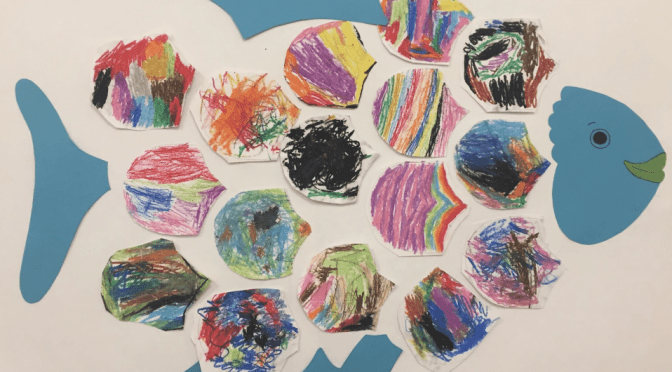Essential Questions:
- How do we grow our understanding of ourselves within a community?
- How do we develop our own identities while also learning about others’ identities?
- How do we use the concept of community to notice and celebrate both similarities and differences?
- How do we use the concept of community to foster a culture of social justice in terms of vision and action?
Reflective Practice:
This is my first year working as a teacher in the Fours at LREI, and I have very much enjoyed engaging with the social studies curriculum, focusing on self and community. The Fours are learning about their own identity, inside and out, in relation to their classroom and home communities. This means that they are learning that their identity is uniquely their own, but they are also learning to celebrate similarities and differences with their peers. This concept comes up when all the students share about their families and homes. This is a great starting place, as family is a major part of a Fours’ identity and world. Supplementing this study with books about different types of families and books, children take away the idea that there are many different types of families and homes, and they are all worth celebrating. A big concept for them was that all families love each other, and they were excited to celebrate that for every child!
We also begin developing the idea of community, particularly holding onto the idea that a community is made up of many individuals who must hold space for all. I ground this in the book “The Rainbow Fish,” by Marcus Pfister, taking away that a rainbow fish is made up of many unique scales. In our classroom, each child made their own scale, decorating it however they each wanted, and we put them together to make one fish. The fish is our community, but every scale is uniquely each child. All of these scales are working together to make a fish, just like all of the Fours are working together to make our community.
We continue this study in two ways; self identity work, as well as community building work, particularly focusing on empathy, kindness and compassion (and connecting this to changemakers (activists) who took action in the name of these values, such as Gandhi, Ruby Bridges, and Cesar Chavez). These two parts really come together, as the Fours learn to advocate for what they each need, as well as noticing they find enjoyment in supporting others in getting what they need.
In terms of self-identity work, the Fours come to understand identity in three parts: outside (skin color, hair color, eye color, etc), inside (likes, dislikes, experiences), and story (ancestry, family, and cultural history). I really enjoy doing this identity work with the Fours, but one challenge I have come up against is how to celebrate difference without objectifying any child’s story or experience. When talking about skin color, one of my kids shared that she noticed there are no kids with brown skin in our class. One of our children disagreed and responded by naming a child in our class who they identified as brown. I intervened and connected it back to some of our earlier learning, sharing that our skin colors are all different shades of brown. (I said this, keeping in mind that skin color is different than race and that an understanding of racial identity is something that is scaffolded throughout a child’s learning time at the lower school, including developmentally leveled discussions in the Fours). I also emphasized that naming our skin color is our own story to tell, not a story we should be telling for other kids or people. When celebrating diversity, and/ or noticing a lack of diversity, how do we not further marginalize any students, while also continuing to embrace and face critical conversations?


The question of whose story it is to tell seems so very important here as the fours are beginning to develop the skills to explore themselves, others and the larger world that surrounds them. I wonder how me might guide our youngest learners to see that the work that change-makers like Gandhi, Ruby Bridges, and Cesar Chavez engaged in was in some ways an attempt to reveal the ways in which all of the unique “scales” in the community are not always given the same opportunities to contribute to the community. What steps can we take to help students to better see these differences, call them out and seek possibilities for change?